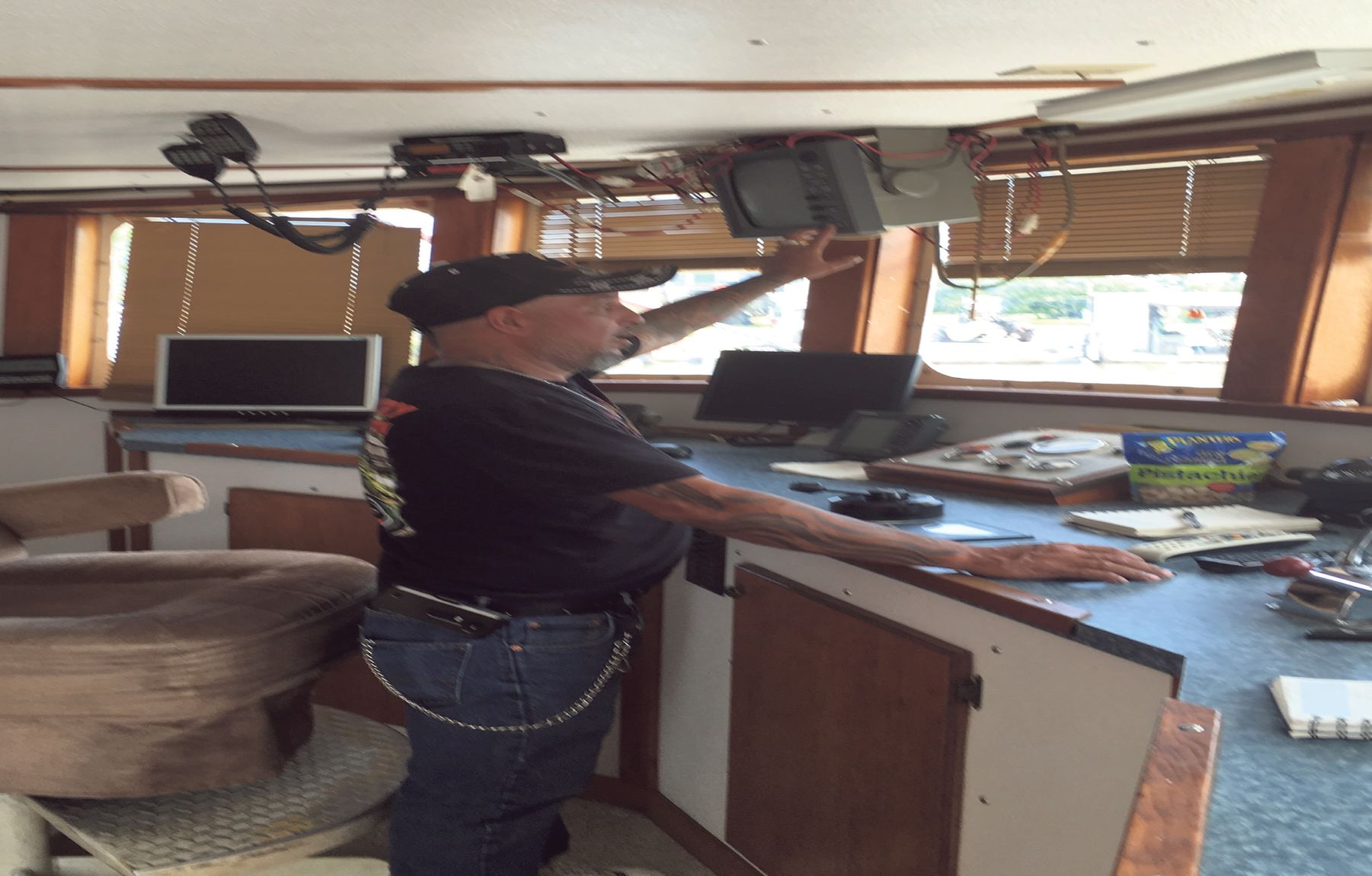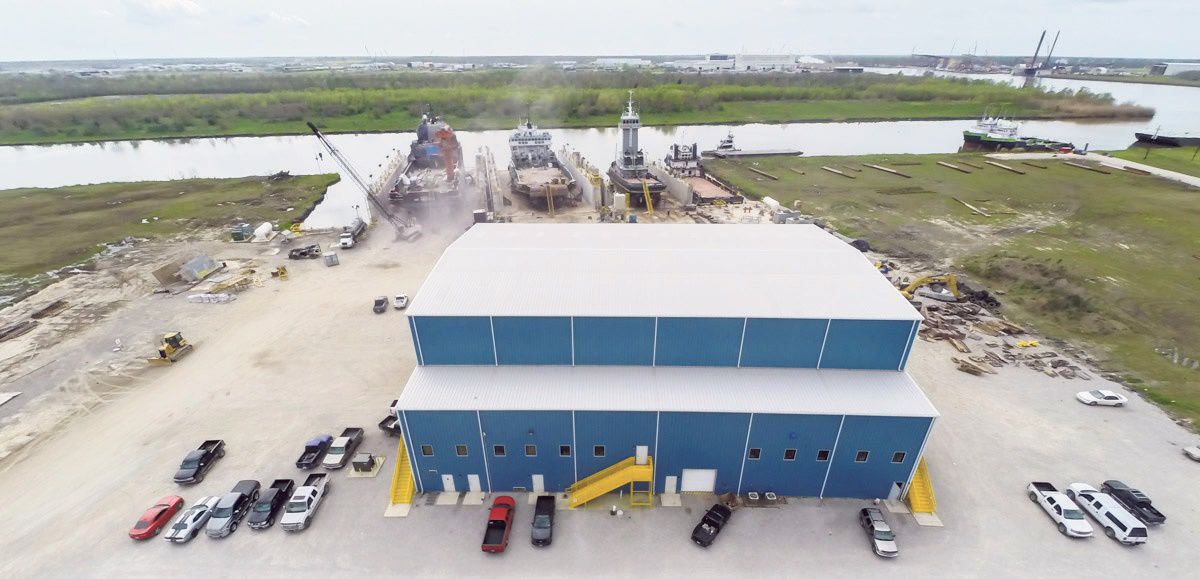
Shrimpers, new rules, at odds
May 25, 2016
Port of Terrebonne plugs along
May 25, 2016With domestic and foreign oil market shifts changing the energy landscape, one port is relying on its history of adaptation to keep chugging along.
The Louisiana Offshore Oil Port, located in the Gulf of Mexico near Port Fourchon, is the largest private storage facility in the nation, according to LOOP President Thomas Shaw. When the oil market changes and presents problems to its current business model, LOOP looks for new opportunities.
Shaw addressed LOOP’s past challenges, its responses and future plans during the South Central Industrial Association luncheon last Tuesday. He spoke on how the company has recently shifted its focus from handling imported oil to domestic products. As production lines have reversed oil back toward Louisiana, LOOP has increased its storage capabilities.
LOOP, which came on stream in 1971, was designed as a link between foreign oil suppliers and American consumers. Its offshore location allows ultra large crude carriers and very large crude carriers to offload its oil, which is then transported inland via pipeline. The port’s pipelines can then connect to refineries across the Midwest.
As LOOP emerged, domestic production started to increase, to the port’s detriment. However, the company eventually made inroads into the domestic market by first becoming a terminal for the Mars oil pipeline in 1996.
According to Shaw, LOOP’s penchant for adaptation has continued through the new millennium, such as 2003 when the company began building storage tanks instead of using only underground caverns for storage. The investment in storage would pay off, as its expanding tank business has become a crucial piece of the port’s business model. Canadian oil was making its way into the Midwest and cutting into some of LOOP’s market share by 2011, a time Shaw calls a “turning point.”
“We started foreseeing what was going to happen with all this fracking of shale oil. So, 2011, we called it a tsunami of oil, and that’s what it felt like was coming at us,” he said.
Two years later, Shell reversed the direction of its Houston to Houma (Ho-Ho) pipeline. Instead of imported and deepwater oil heading from Louisiana’s coast to Houston, domestic oil was now coming back toward LOOP’s Clovelly storage facility in Galliano. Shaw said the company soon found an increased production market in this area, so it built additional tanks at Clovelly to receive that oil.
“LOOP today looks a lot different than it even did five years ago. Five years ago, these numbers were switched. Right now, two-thirds of the oil we handle is domestic oil, and about a third of it is imported oil,” he said.
With a continual global surplus of 2 million barrels of oil per day, and Ho-Ho oil continuing to land at LOOP’s feet, the need for storage has only increased. In response, LOOP had contractors start construction on seven storage tanks, each with about 355,000 barrels’ worth of capacity, in 2015. The 26-month, $110 million project is expected to finish next year. Even with such a large project in the works, Shaw sees more opportunity on the horizon.
“We’ve got these seven, but we’ve got more customers coming at us and saying, ‘Can you build more tanks? So, we don’t know where that ends, and you have to be kind of cautious you don’t overbuild. But at this point in time, the demand continues and we’ll see if it spurs any more activity,” he said.
Shaw said LOOP sees offshore production increasing through 2017 and then ramping up even more heading into the 2020s. The company also sees global sellers continuing to head to the Gulf and sell to their established markets, which would keep LOOP’s offshore port busy. According to LOOP’s president, the company expects a “second tsunami of North American oil,” with 2011 being the first, to hit the company soon. He said Gulf of Mexico oil is medium sour crude, which LOOP handles a lot of and is what most refineries along the river. The challenge going forward will be figuring out how to get some of that oil coming his company’s way.
“You have to look at where that oil’s coming from, where does it need to get to?” he said. “We’ll look at the production profiles and we’ll work with producers and traders and refiners and fill whatever needs they have.”
The business also started selling storage futures of space in their sale dome caverns in Clovelly to oil companies in 2015. It allows companies that cannot afford tank storage to buy smaller spaces at a time they think they would need it. LOOP has also looked into vessel loading from its marine terminal for exports. However, Shaw said the market currently has ways to load oil for export from St. James or Houston. Unless the market experiences serious growth, he does not see his company jumping into it.
“We’ve got economies of scale, but we can’t go in and capture a small, niche market as well. Somebody else has already got that,” Shaw said.
With low oil prices cutting revenues by almost 70 percent, oil companies have asked marine companies and other support businesses to take reduced payment for services. Shaw said LOOP has not experienced that kind of price draw-down yet, though.
“We’ve got long-term contracts and we’ve got posted prices. We’re holding steady in our prices for now,” he said. “Really, when you get in the other situation, when you start to lose customers, is when we might go into looking at reducing prices.”










